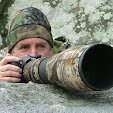 |
| Ants and green aphids |
|
An interesting image showing ants "farming" green aphids on a dock stem near Lac de Roselend in the French Alps.
I took this last week and have since read up a bit on the process and it seems it's not in the interest of the ants to eat the greenfly but better to feast on the sweet, sticky honeydew secreted by the aphids.
The
ants are not happy just having the leftovers, but will gently massage
the back and rear end of the aphid to make the aphid produce honeydew on
tap. (Much as a farmer will milk a cow!).
Such is the 'relationship' between aphids and ants, that ants will
even take the eggs of the aphids back underground to their own nests.
Not to store for food, but to nurture them until hatched, whereupon they
are taken back to a host plant - ready to start producing the much
sought-after honeydew food for the ant colony.
My thanks to http://www.gardenseeker.com/ants.htm for their info.







%20(1).JPG)



























